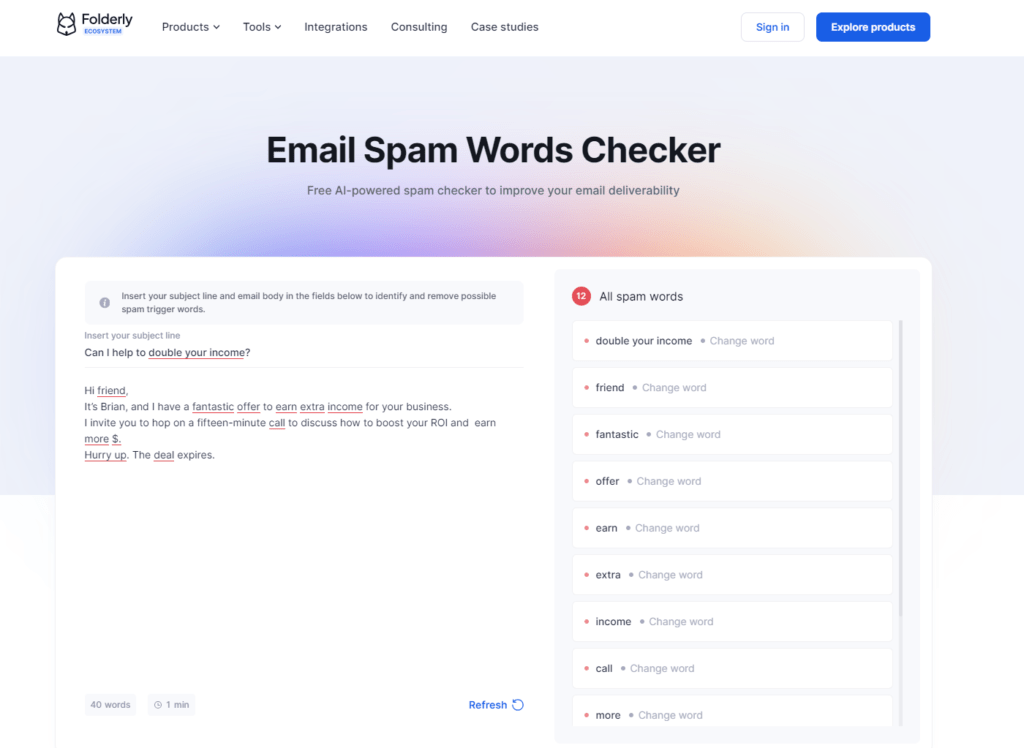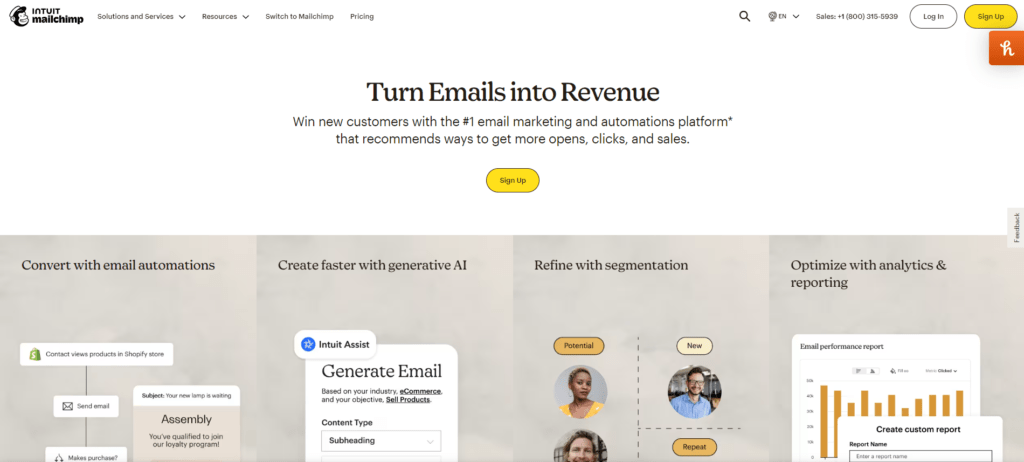Table of Contents
Over 60% of consumers prefer email as the primary source of communication from businesses.
Now, you might be thinking… In a world obsessed with TikTok dances and meme stocks, why’s good old email still the best? Simple.
Think of it like this: it’s a direct line to someone’s personal space, where you can have a one-on-one conversation without distractions.
An the real beauty isn’t just in sending emails—it’s in understanding the story they tell afterward. The who’s, the why’s, and the “Oh wow, they clicked that?” moments.
This is when email marketing metrics come in handy.
What Are Email Marketing Metrics?
Ever been on a road trip with no map, GPS, or sense of direction?
That’s what doing email marketing without metrics feels like. You’re sending messages into the great digital yonder, hoping someone’s listening (or, you know, clicking).
Email marketing metrics are your compass. They’re the numbers and percentages that reveal how your emails are performing.
These metrics tell you everything: from how many people opened your email (yay!) to how many clicked on that link to your newest product.
While numbers are cool and all, it’s what you do with the insights that counts. And hey, no pressure — just the future of your email marketing strategy.
Why You Should Track Email Marketing Metrics
Now that you know why email marketing metrics matter, let’s move to practical suggestions.
8 Email Marketing KPIs You Need to Track
1. Deliverability Rate 📬
This is no joke when it comes to email marketing. It means how many of your messages are landing in people’s inboxes instead of the dreaded spam folder.
Now obviously we all want the highest rates possible. Who doesn’t love seeing those inbox confirmation pixels, am I right?
A good deliverability percentage you should go for is generally 95% and up. Anything lower than that and it can start hurting your ability to connect with your list over time.
So what makes drops and how can we avoid them?
A few big culprits are old data like expired email addresses, spammy-sounding words or links in your content, and outdated IP addresses.
Regular mail checking can also enhance your deliverability rates. Before sending out large campaigns, consider testing your emails using this free mail tester. It helps detect issues like spammy content that could affect overall results.
Scrub your list regularly using email marketing services like Validity to find and fix any incorrect or inactive emails. Even a few bad addresses can skew the rate.

Stay on top of IP warmups if you use dedicated IPs for sending. SpamAssassin and others will help ensure your IPs stay in good standing.
Test subject lines and content for spam words or phrases. Use a filter like Spam Word Check before launching campaigns.

Format your emails according to ISP requirements with a plain text alternative for universal compatibility.
Use tracking pixels and server logs to pinpoint any issues on a campaign level like low open rates for specific sends.
2. Open Rate 📧
This email marketing metric basically tells you what percentage of people actually bother to check out your email after receiving it. Pretty straightforward right?
Now a good open rate can vary some, but usually, 20% or higher is solid. It means people are clicking on your messages. Anything less might mean they are losing interest in the “hello” basically. Not ideal.
The email marketing giant Mailchimp lets you easily see open rates for all your campaigns right in the main dashboard. You can also filter the data by list, segment, date range, and other options. It will show you the exact number and percentage of opens for each message.

So how do you boost those numbers? Well, the timing is huge. Sending when your list is likely online helps a ton. Like before work, lunch breaks, evening – play around and see what works best.
Subject lines are training too – a little friendly preview text goes a long way for curiosity. Like “3 Tips We Wish We Knew” or “Your Fave Product is Back in Stock!” to tantalize them.
And formatting is key. Break up big blocks of text into nice chunky paragraphs so messages are friendly on mobile. Bullet points, images, and headings keep the visuals interesting too.
Testing is important, too – play around with your ESP’s split test features to compare subject combos quickly. You’ll find your list’s favorites in no time that way.
3. Click-Through Rate 🎯
Clicks (CTR) are super important email marketing kpi to chat about next. The CTR tells you what percentage of people who opened an email ended up clicking a juicy link.
A quality CTR usually hovers around 2-3%, which isn’t bad at all. Any higher and you know people are digging what they see. But of course, we want to test and optimize to boost those numbers upwards all the same!
How Do You Get Those Clicks?
1. Compelling call-outs above links are very important. Make those headlines super piquant to spark interest. “Our Top Seller for Half off!” versus just a generic “Shop Now” always wins more fingers.
2. Formatting also helps – break up blocks of text so links stand out. Including quick snapshots near buttons keeps readers in the know before the tap.
3. URL tracking through analytics is your secret weapon too. See which ones overperform then feature those topics more prominently next campaign.
4. Compare subject lines, callouts, and even button colors through your email platform. Let your list guide you to the clickiest magic combo over time.
Google Analytics is a free analytics platform that is perfect for tracking all sorts of email metrics, including CTR.

4. Conversion Rate 📌
Let’s talk about the main event – conversions! At the end of the day, this is one of the email marketing KPIs that really matter.
It tells you what % of people actually completed the action you wanted after clicking, whether that’s a sale, sign-up, download, you name it.
Most marketers want about a 2-5% conversion rate depending on the specific goal. Anything higher is kicking a serious goal. But of course, tweaks can always improve an already good thing.
Landing pages are clutch here – make completing the conversion as seamless as possible. One-click upsells, pre-filled forms, easily scannable copy all help.
Incentives are key too. Time-sensitive offers, freebies with a purchase, social proof like reviews – these psychological nudges give a nice boost.
And copy – focus benefits first then removals. Make it clear how they improve customers’ lives while friction vanishes. Spice it up with customer quotes!
Analytics like Google let you attribute traffic sources so you know what’s really driving results too.
5. Bounce Rate 📭
We’ve covered a lot of important email campaign metrics but no chat is complete without discussing bounces!
This little number tells you the percentage of emails that got refused or spit back basically. Not good news, friends.
Most professionals say to aim under a 5% bounce rate max. Any higher and it could signal issues like outdated contact info on your list. And too many bounces actually hurt your sender’s reputation long term.
How Do You Minimize These Barriers?
1. Regular list hygiene through a tool like ClearOUT is clutch. It finds and removes inactive, typ,o or wrong emails saving you headaches later.
2. You should also double-check formatting – make sure anytime, opt out and unsub links work smoothly across all platforms. Plain text is still cool for universal rendering too.
3. It’s important to stay on IP warmups if using a dedicated IP from your email provider. Keep that reputable for maximum deliverability.
With a little TLC, you can keep bounced emails to a minimum no sweat! Just don’t neglect your list basics.
6. List Growth Rate 📈
This one is among the most important email marketing metrics, too. List Growth Rate measures how many new people are joining your subscriber list over time. And there’s always a goal to boost blog subscribers!
It’s super important to track for obvious reasons. A healthy growth percentage depends on your business goals and current list size.
But most experts say 5-10% monthly is solid when you’re starting. Over time you’ll level out but it shows your tactics are working.
So How Do You Boost New Signups?
1. Offering high-quality, useful content upfront by tempting opt-in is key. Don’t be shy about sharing your best freebie on social too for some shareable love.
2. Make onboarding a breeze as well – one-click subs, instant downloads, and many other options. People just want to feel the value asap with no barriers.
3. Incentivized offers like 20% off their first purchase also motivate them to take the plunge. Use that scarcity FOMO, friends!
4. Most importantly though, deliver on the promise. Keep content fresh and keep engaging subs so they feel good about their decision. Positive word of mouth will thank you later.
As a full-service ESP, Mailchimp rescues your rates. You can easily view your list growth over time directly in the main dashboard reports. You can see new subscriber additions on a monthly, weekly, or daily basis.
8. Unsubscribe Rate 📉
No chat about metrics would be complete without chatting with unsubscribes. It’s also very important among KPIs for email marketing. This little number shows the percentage of people opting out of your list instead of just hiding or deleting your emails.
Most marketers aim to keep unsubscribe rates under 2%. Higher means you may be annoying or irrelevant to some subscribers over time. Not a good look!
So How Do You Minimize This Optic?
1. First and foremost, focus on delivering quality content people care about at a reasonable frequency. Respect their interests and busy lives.
2. Make sure opt-out links are clear, accessible, and work flawlessly across all devices. Don’t trap anyone in! Consent is key here.
3. Analytics help too – see if unsubs spike after certain subject lines, sends, or segments. Use that intel to change your approach, if there’s a need.
8. Spam Complaints 🚫
Yet another very important email marketing metric.
This dreaded stat shows how many of your emails get flagged as junk by recipients.
We want to keep this number as low as humanly possible.
A few stray complaints here and there are normal, but too many can seriously damage your sender’s reputation long term. It’s like the email equivalent of having a big “spammer” sign hung around your neck. Not cool. At all.
How Do You Minimize Catching Flack?
1. Ensuring high-quality, engaging content people want is key – the number one way to avoid looking undesirable.
2. You should also strongly double-check your list hygiene and consent workflows. Scrubbing invalid addresses and confirming opt-ins properly is a must here.
3. Checking message formatting for things like all-caps text, excessive exclamation marks or questionable URLs also helps prevent unwanted suspicion. Keep it casual.
Wrapped Up
We just wrapped up the rundown on those important metrics we want to watch for our lists. Now it’s time to put their tracking skills to the test!
So go grab your free analytics from platforms and make the best out of it.
Before you know it, you’ll be a metrics master analyzing like the best of them. Optimization is on point making that revenue sing, and subscribers live their best lives.







Add your first comment to this post